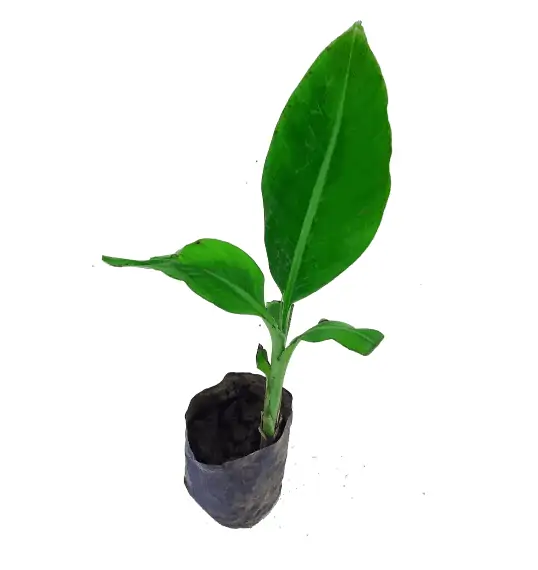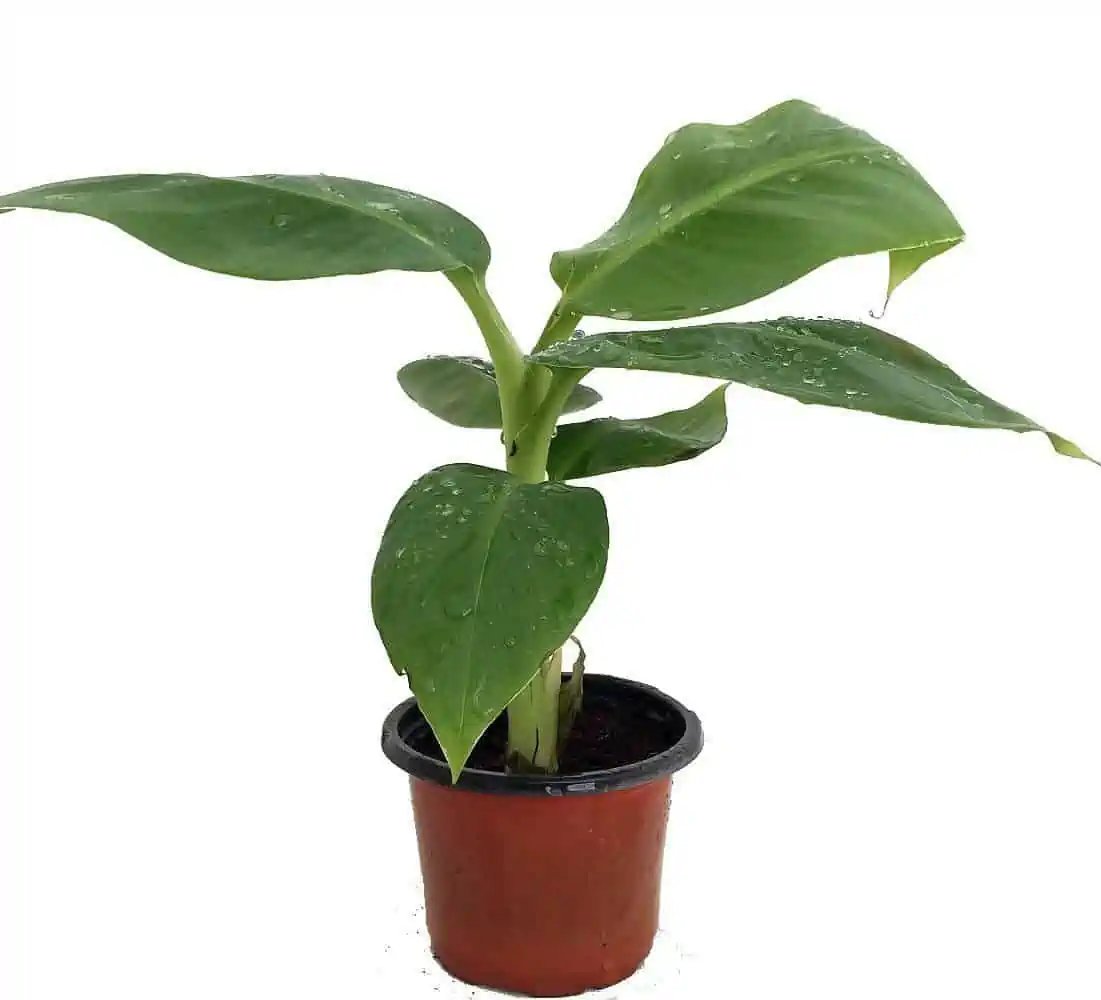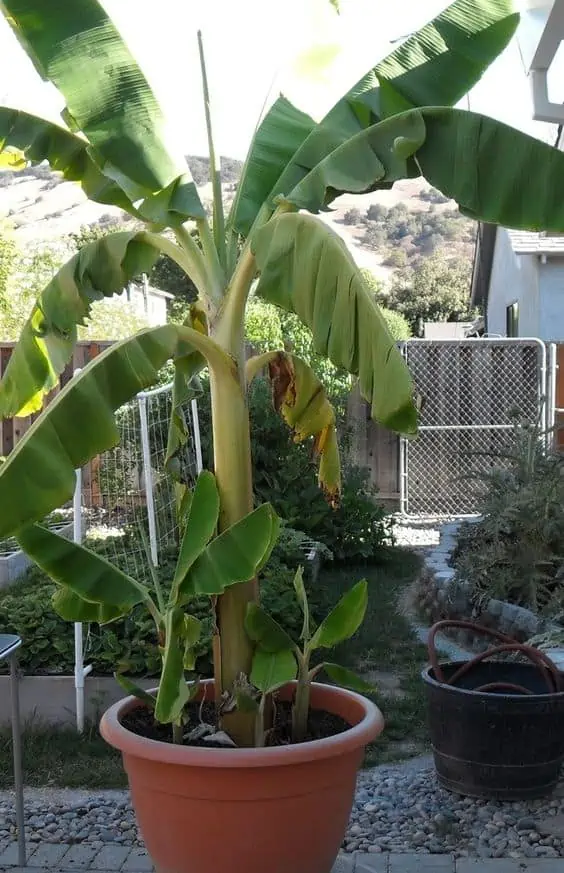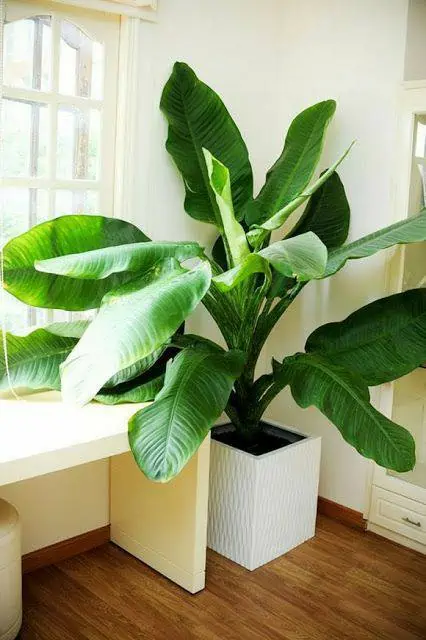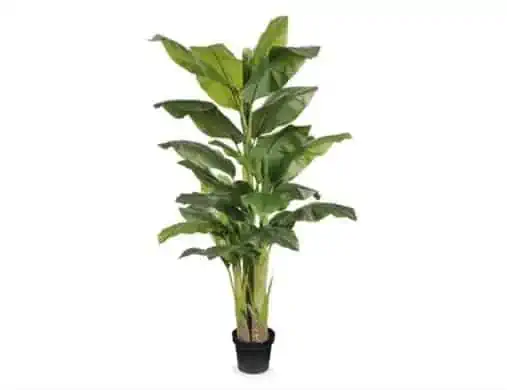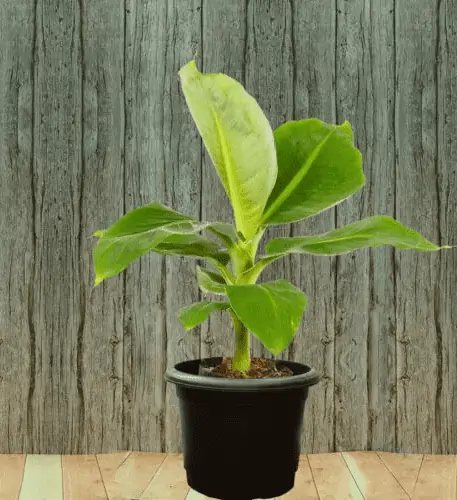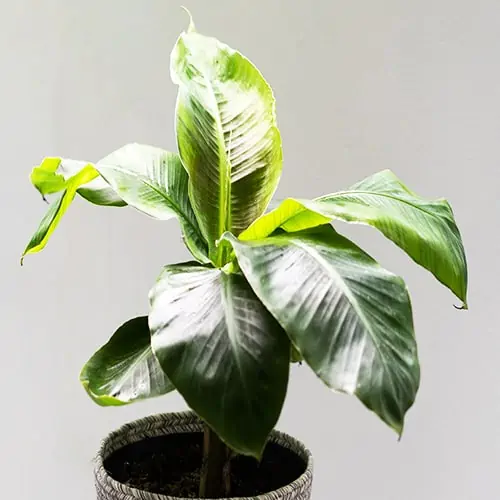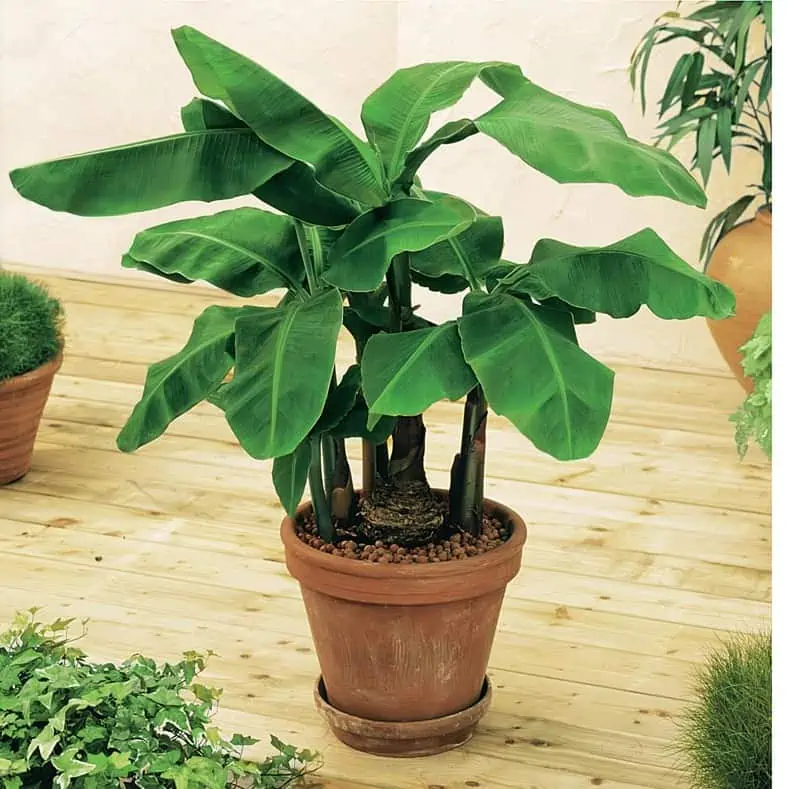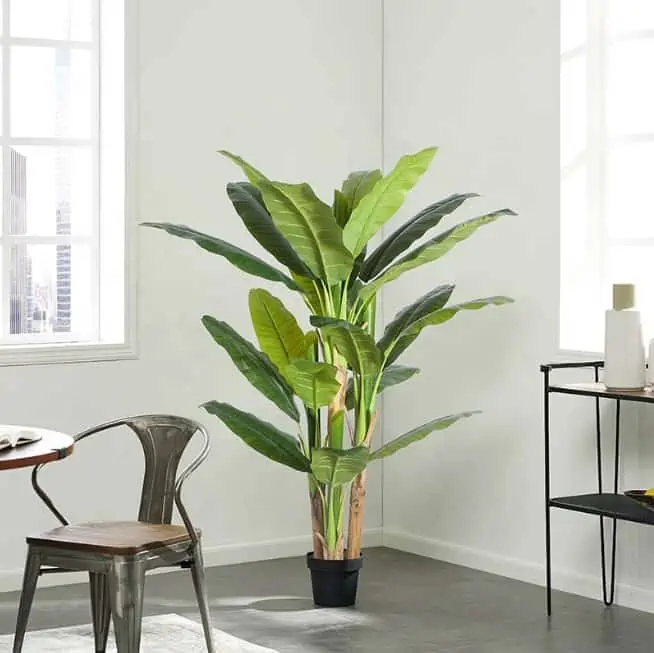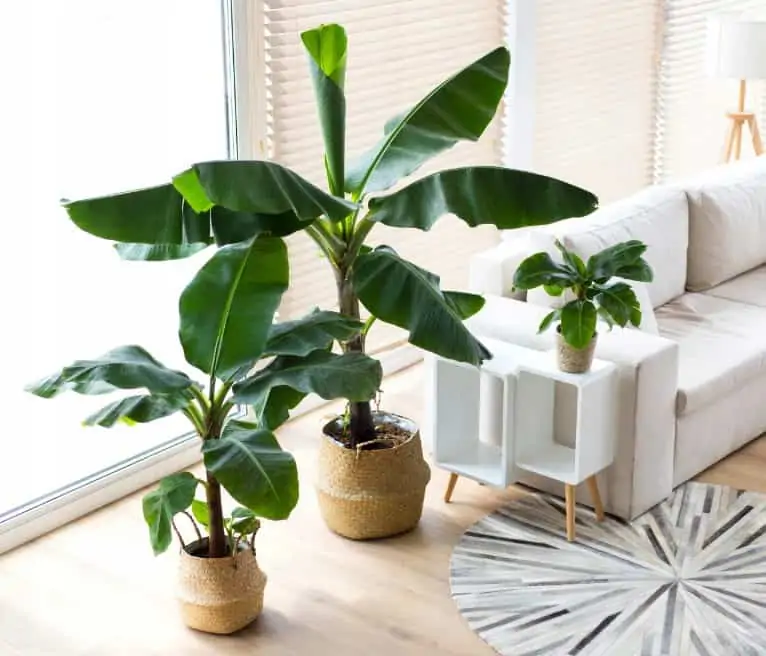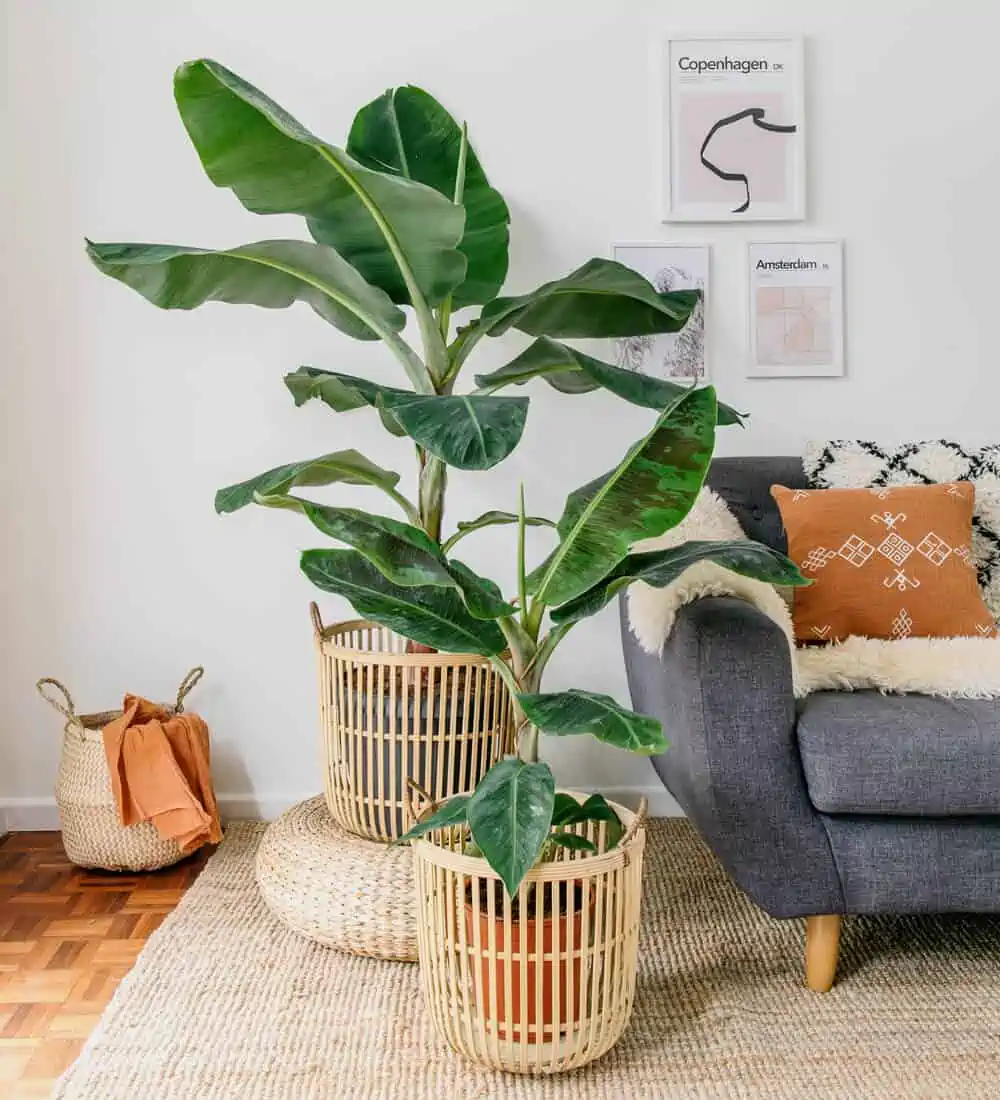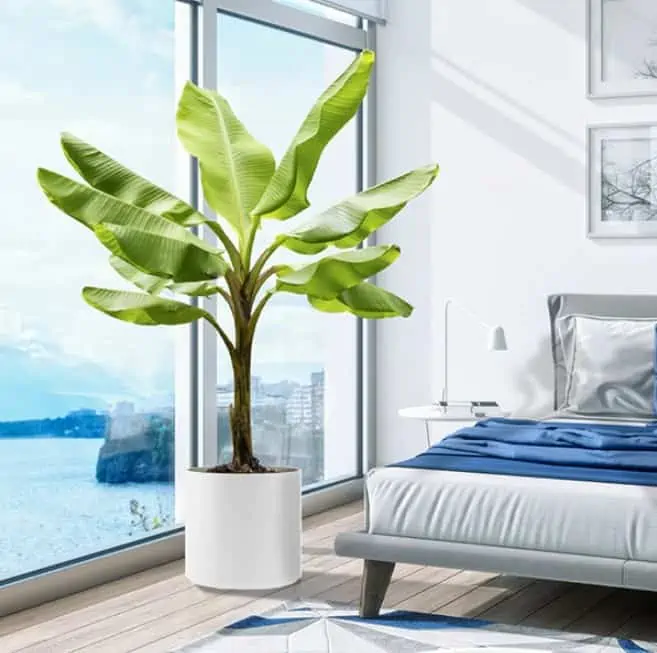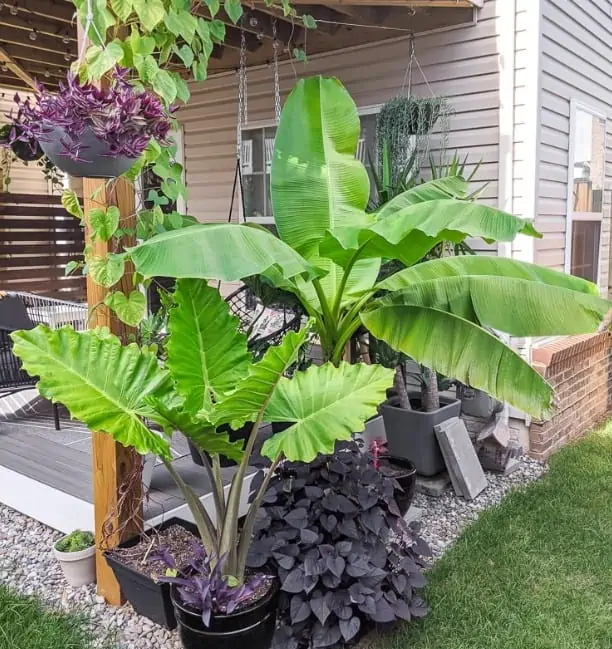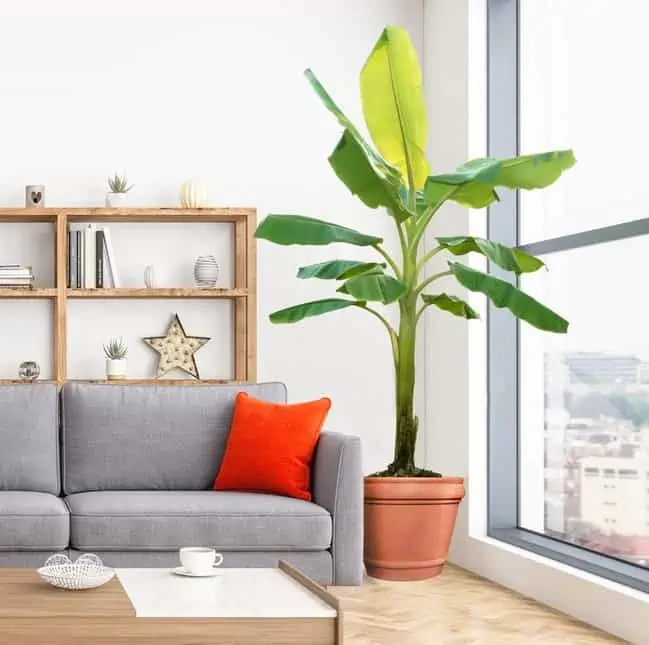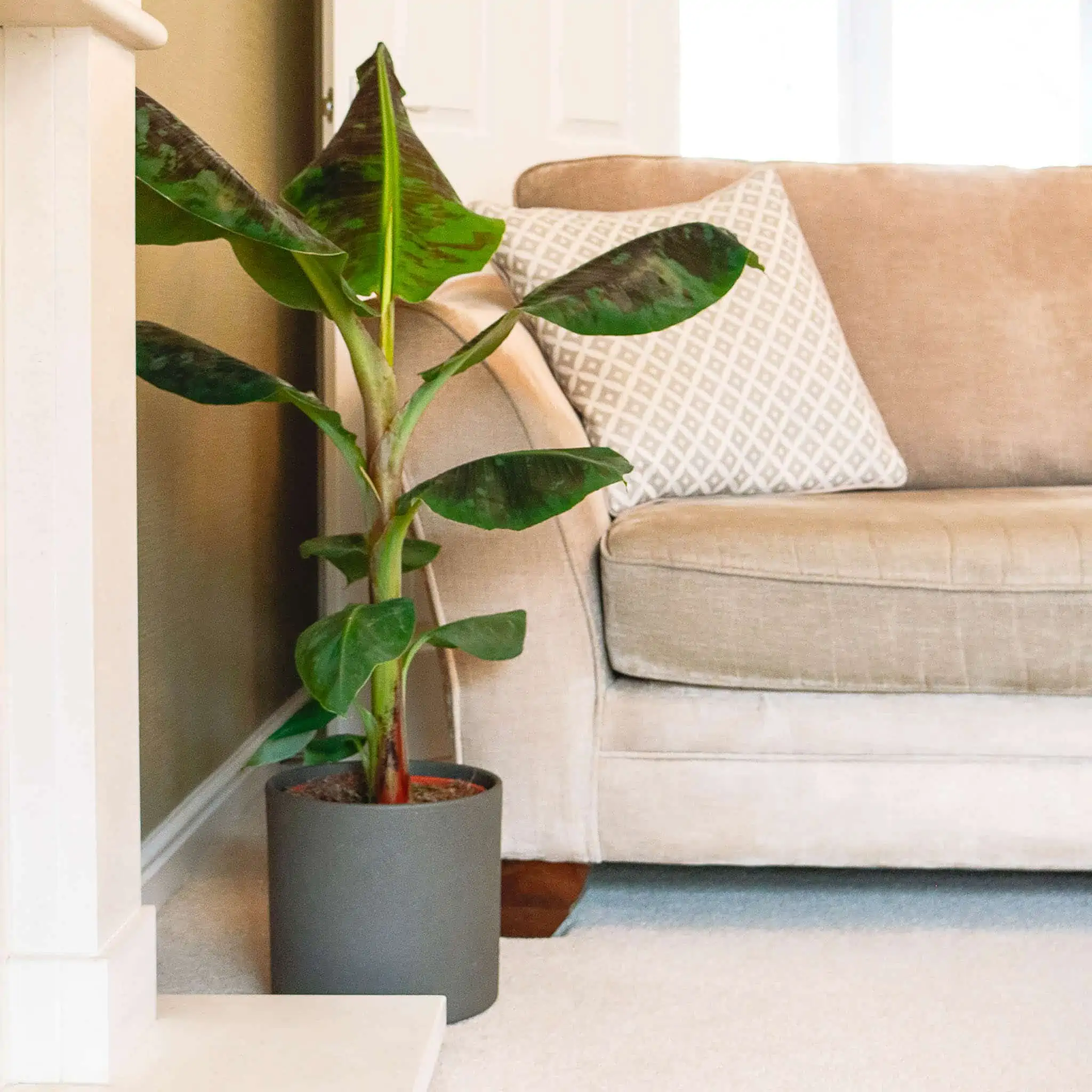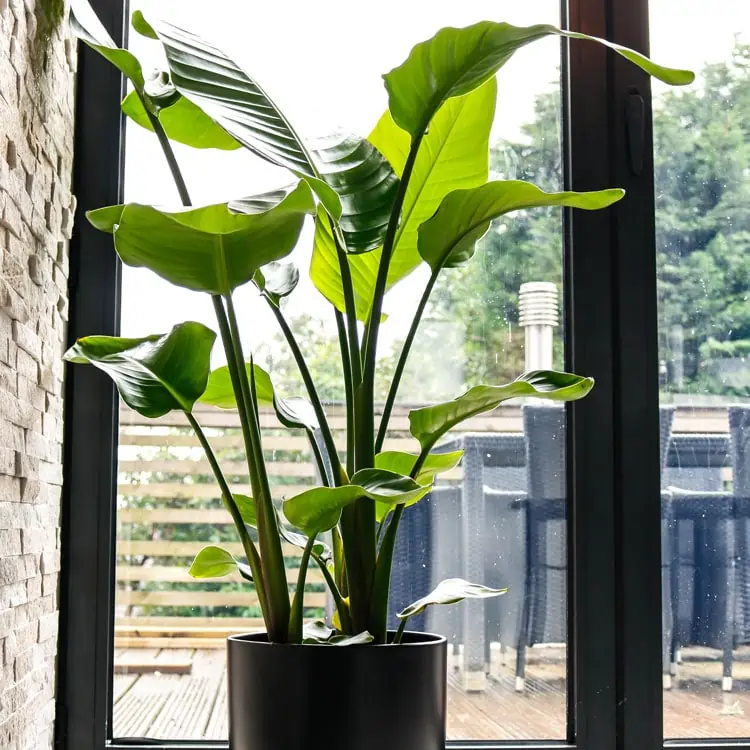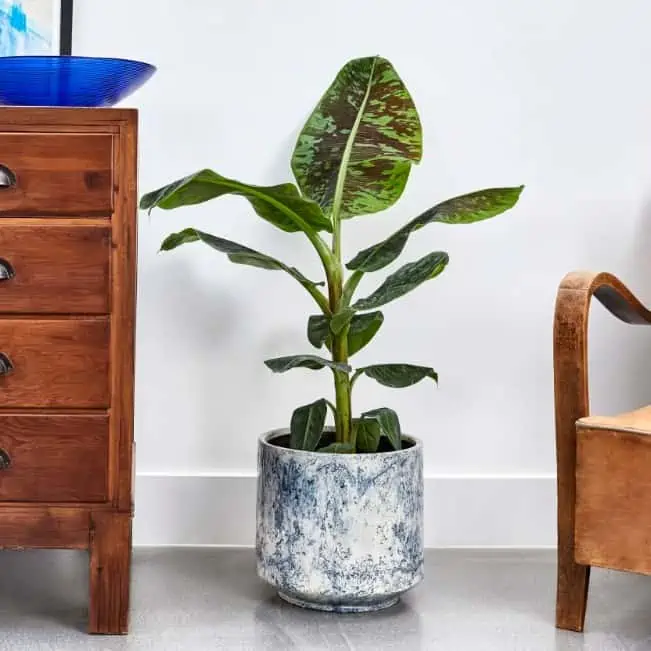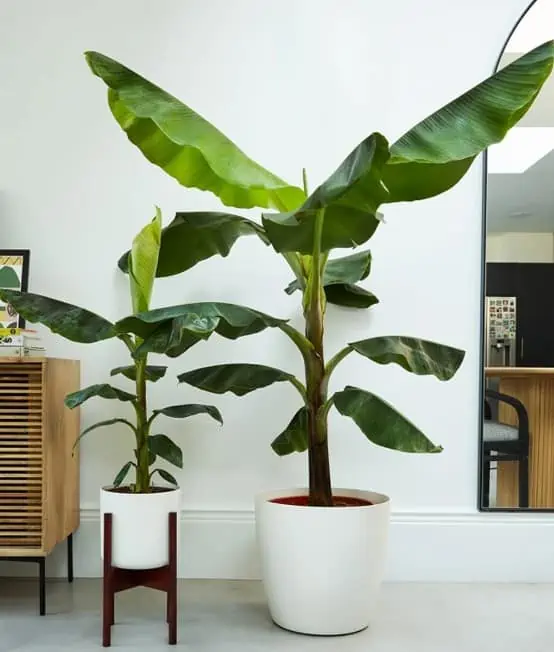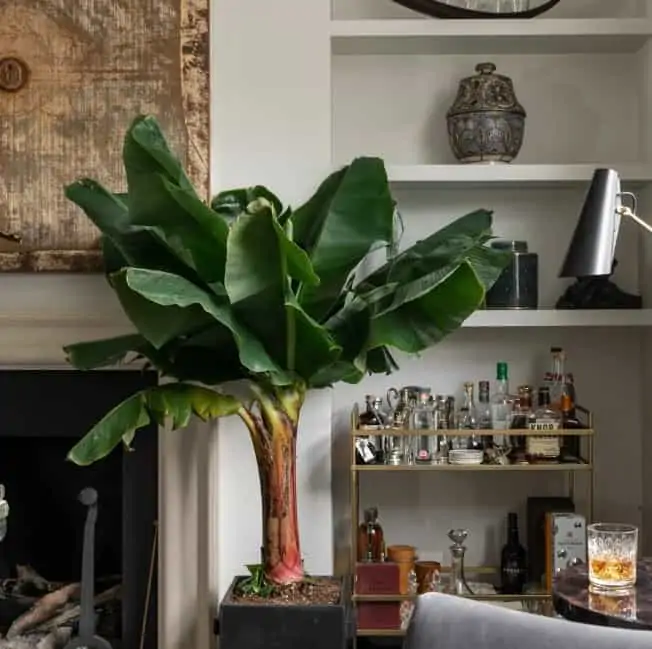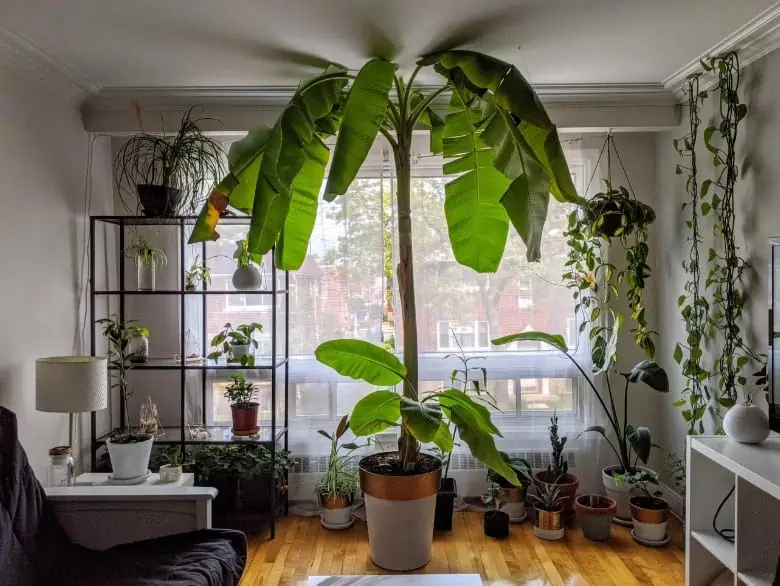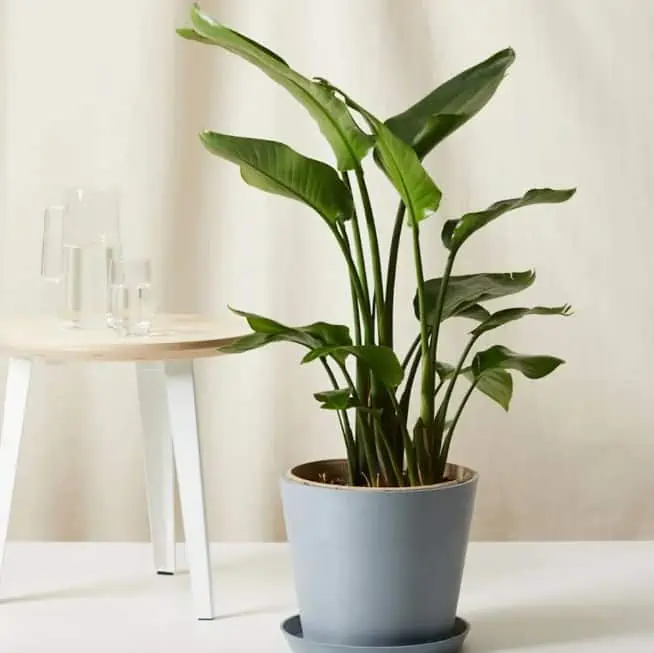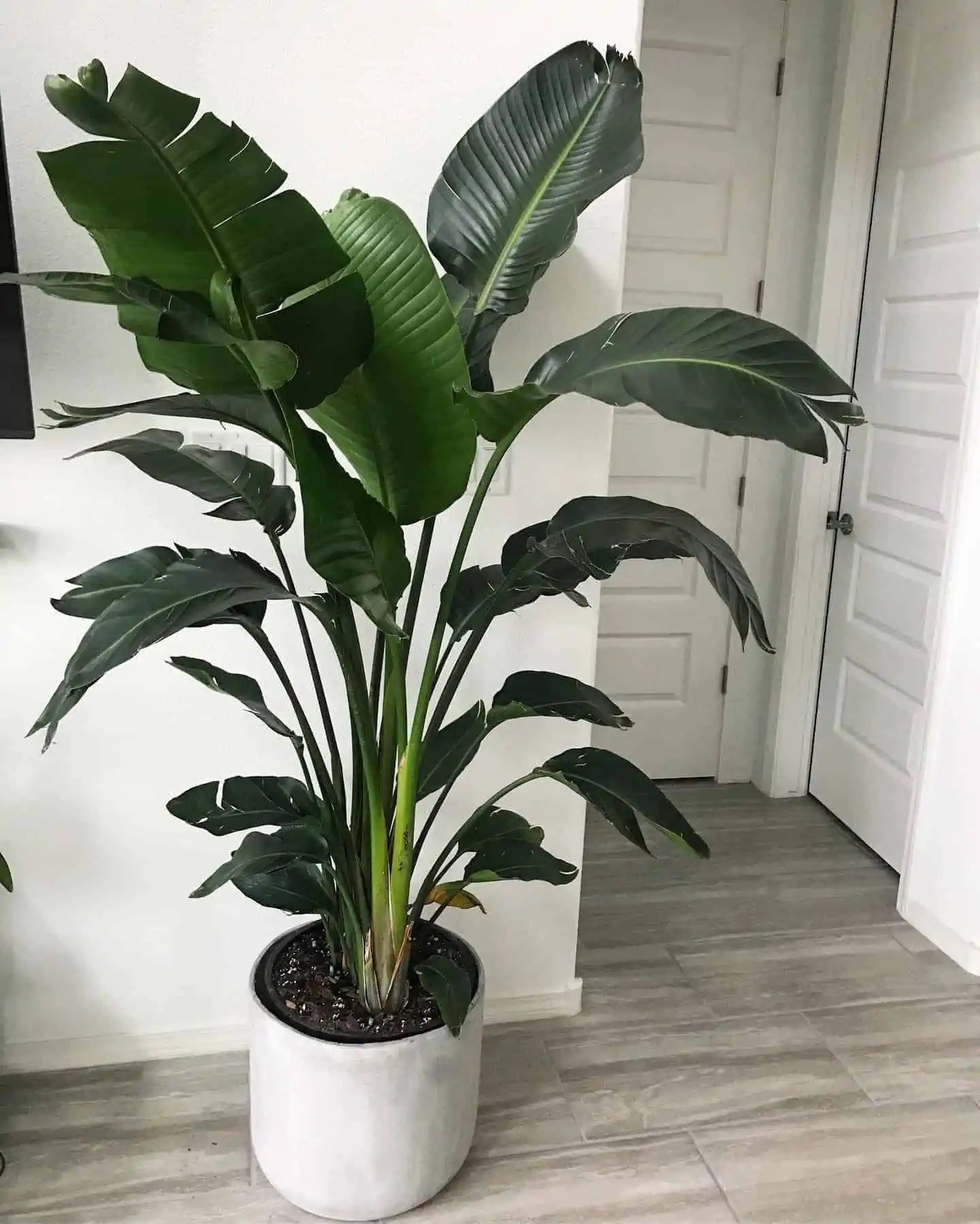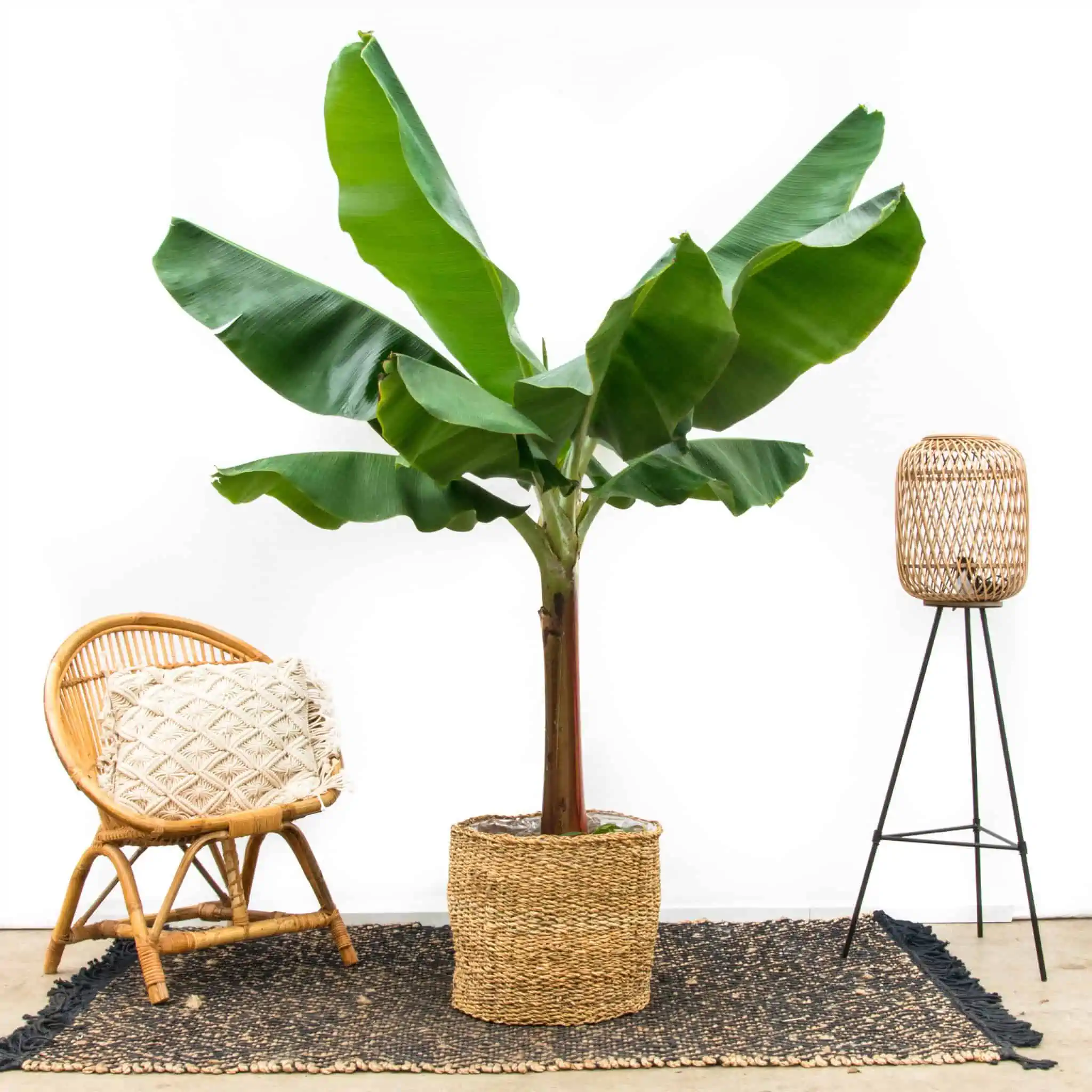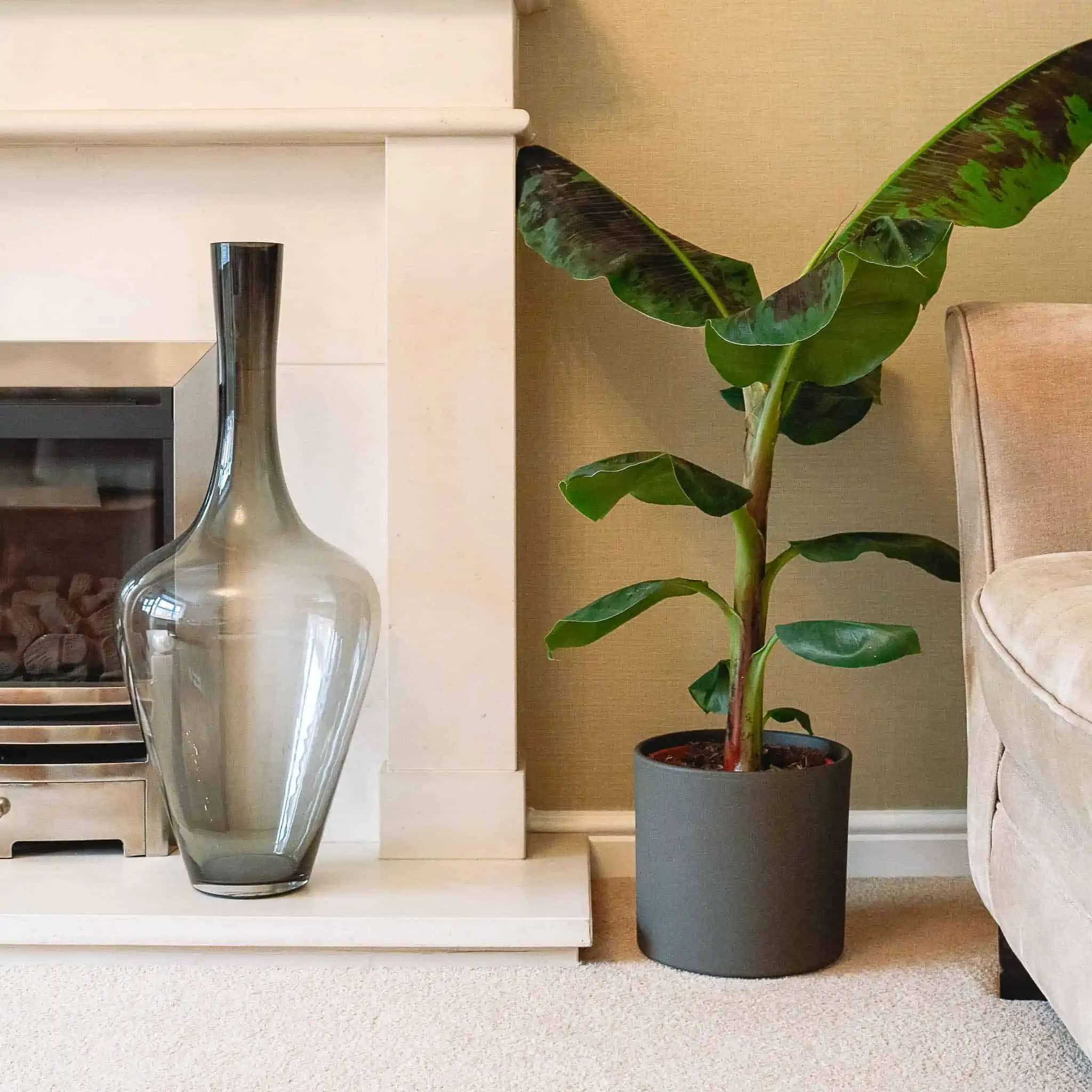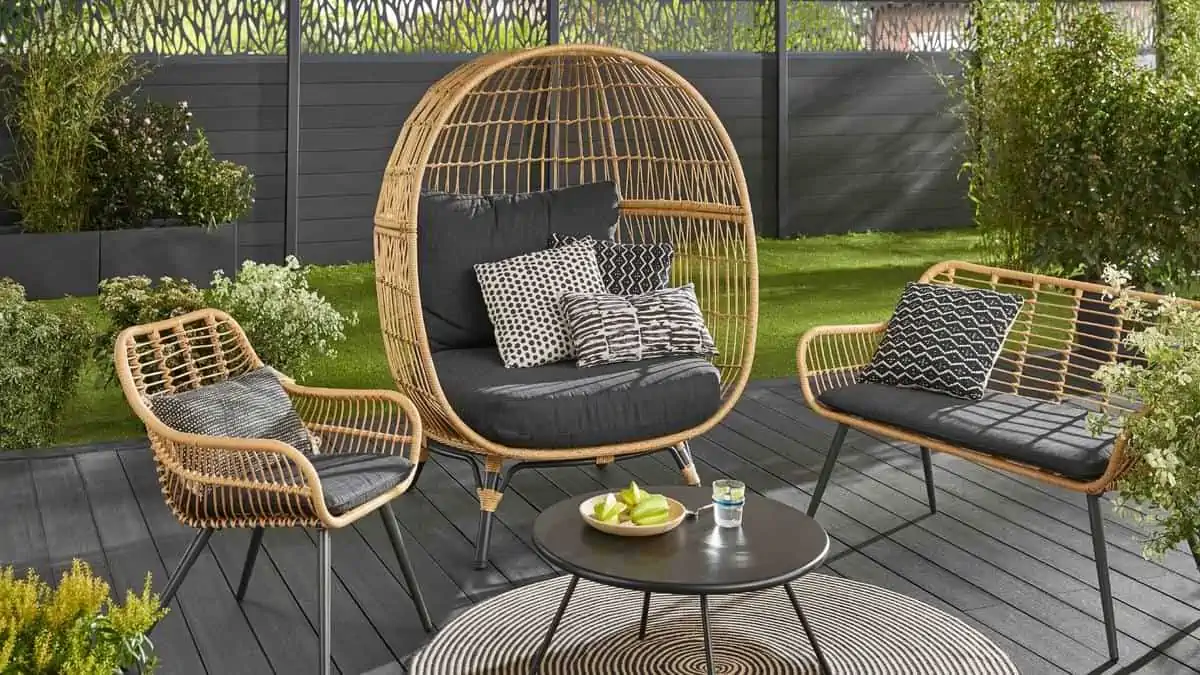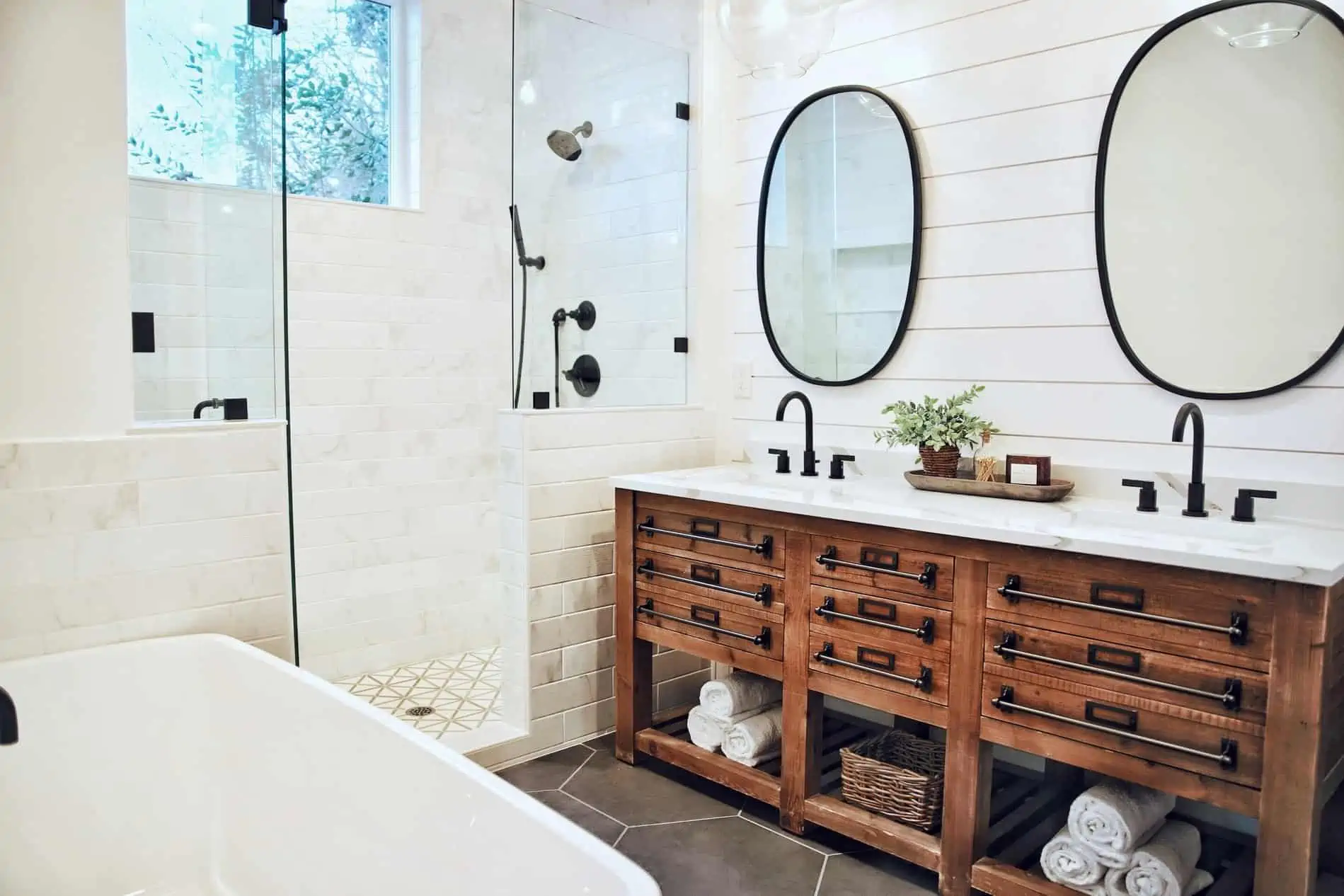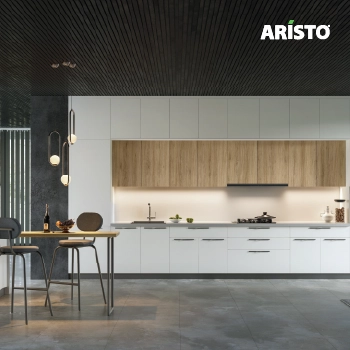The banana tree is a unique plant that helps express your artistic taste when you use it as an element of home decor. With a lifespan of about 25 years, the banana tree gives an exquisite and uncommon look to your home. The lovely leaves and flowers of the banana tree give your home a tropical touch and make the indoors look perfect in pictures. The banana tree has many uses too. It can be used for edible purposes and also as craft materials, fertilizer, etc. This plant belongs to the family Musaceae and is a large herbaceous flowering plant, with over 400 species worldwide. When you grow a banana tree with care, it makes your home look matchless and fresh.
The tree enhances the aesthetics of the house with its beautiful foliage and flowers. According to the Vastu Shastra, having a banana tree with a good lifespan is excellent for your health and mental peace, and creates a positive image of your home. Read along to know about the proper care, types, and propagation methods, along with the Vastu benefits of the plant, and solve your doubts using the FAQs section.
Important elements for growing a banana tree at home
A banana tree requires ample light, water, and humidity for best growth and a long lifespan. So, it is considered an outdoor plant. However, with proper care, you can also grow it indoors in a pot, especially if you live in tropical areas. Growing the banana tree as a houseplant gives an ornamental look to your indoors. To accentuate the look of the plant as well as your home, you can plant it in decorative pots made of ceramic, plastic, or wood.
Light
Banana plants grow the best under full sun. So, exposing it to sunlight for six hours every day will enhance its growth.
Soil
Banana plants prefer soil with a slightly acidic pH. The tree does not have much tolerance for salt in the soil. You must plant it in organically rich soil with good drainage.
| Also see: Bonsai tree: Guide to grow top 12 plant species (+Buying options) |
Water
Since it originally belongs to the warm climate, the lifespan of the banana tree enhances when there is access to a lot of water. While growing the plant at your home, make sure to water it regularly. However, you must not make the soil soggy by overwatering.
Temperature and humidity
The banana plant does not grow well in extreme temperatures. Instead, it prefers warm and humid weather. Cold and dry weather will reduce the lifespan of the banana tree resulting in premature death. So, misting the leaves of this indoor houseplant on a daily basis would be of great help.
Fertilizer
To grow the banana tree as a houseplant, you must create a mixture of soil and compost every year. This raises the quantity of organic matter in the soil. A regular application of balanced fertilizer throughout its growing season will enhance the lifespan of the banana tree.
| Also see: 21 Affordable large planter & pot designs you must buy online! |
Types of banana trees
When selecting the types of banana plants you want to decorate your home with, you should first consider whether you want to keep the plant indoors, in your backyard, garden, or on the terrace. For example, if you want a banana plant that grabs the attention of every visitor in your garden, the Musa velutina plant can be a good choice. The Musa velutina plant has attractive coloured fruits that will add a pleasant appearance to its surroundings. On the other hand, if you are looking for a simplistic banana plant to give your home an adorable look, you can choose the Cavendish banana plant. Here are some types of banana plants that will give your home an interesting appearance.
Cavendish banana trees
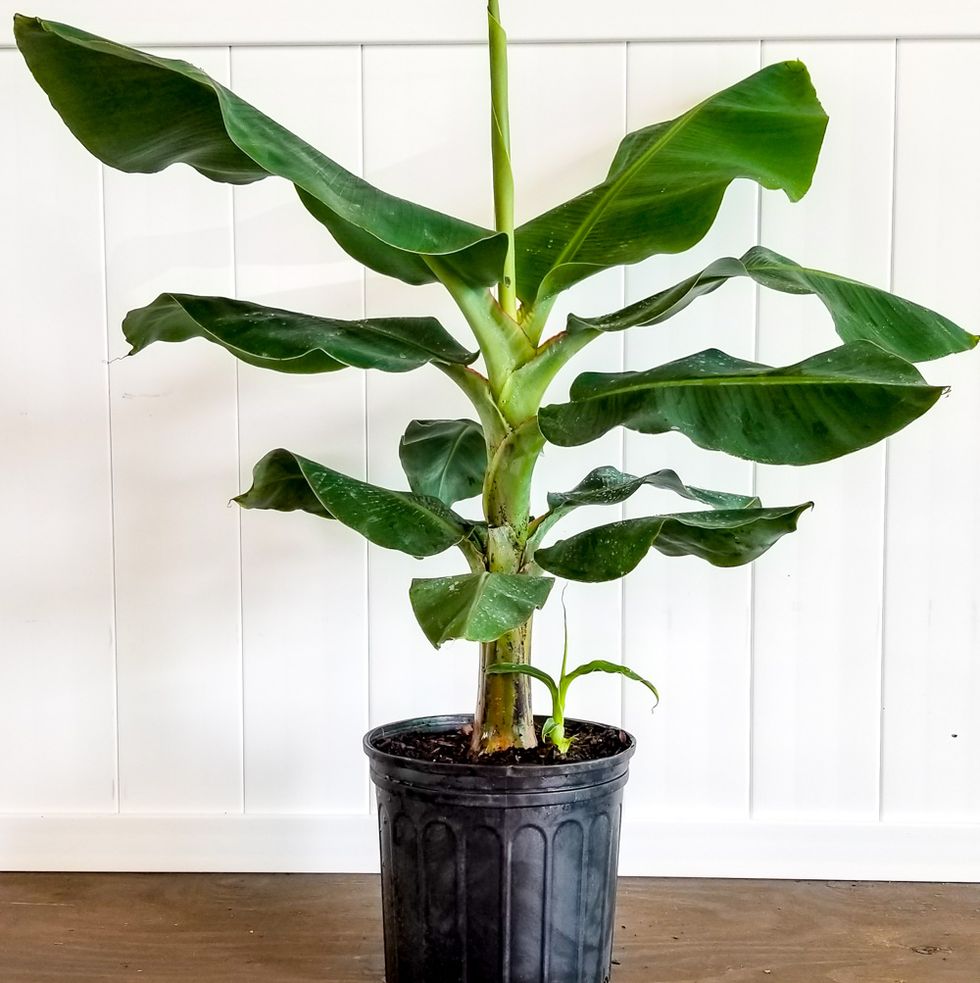
Image Source: Pinterest
This variety of banana trees is the most common. The main use of this variety of banana trees is its fruits. Sometimes, it is called ‘dwarf cavendish’ due to the short height of its pseudostem. In the early stage, these plants have purple blotches on their leaves. However, they disappear after maturity.
| Also see: Grow gorgeous Dahlias with these tips for A+ home decor (Buy now!) |
Lady finger banana trees
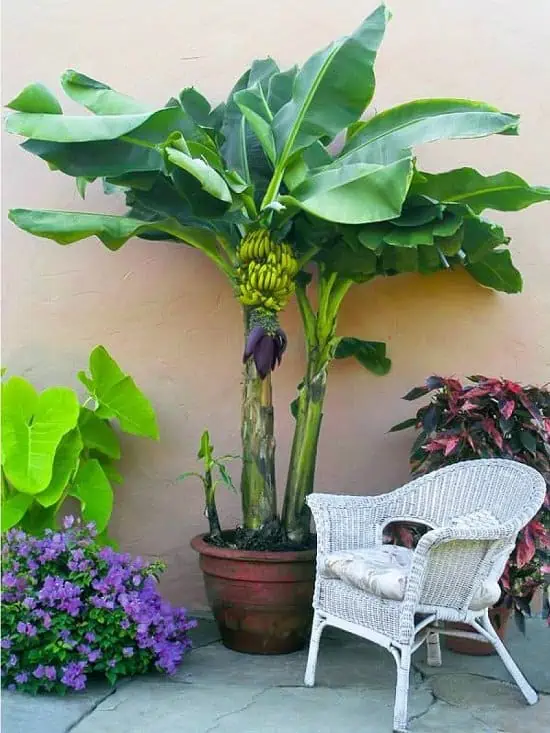
Image Source: Balcony Garden Web
This variety is native to Southeast Asia and Australia. These are perennial plants with leaf stalks growing straight from the soil. These banana trees grow fuchsia flowers. The fruits are produced from these flowers. This slender and tall plant adds an aesthetic touch to your backyard.
Banana dwarf red Dacca trees
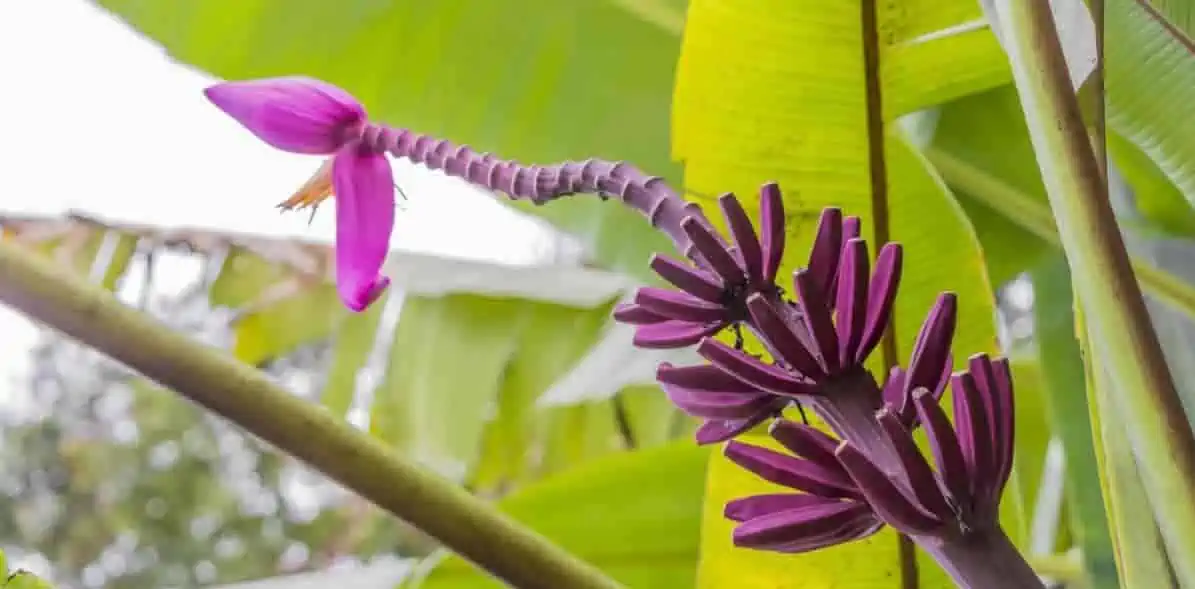
Image Source: Plant Care Today
This type of banana tree is native to India and Southeast Asia. However, these can also endure cooler climates. The small, sweet bananas produced by this plant are orange to red-coloured. These fruits from the banana trees have a longer shelf life.
| Also see: How to grow 12+ Orchid types for exquisite home decor? (Buy now) |
Blue Java banana trees
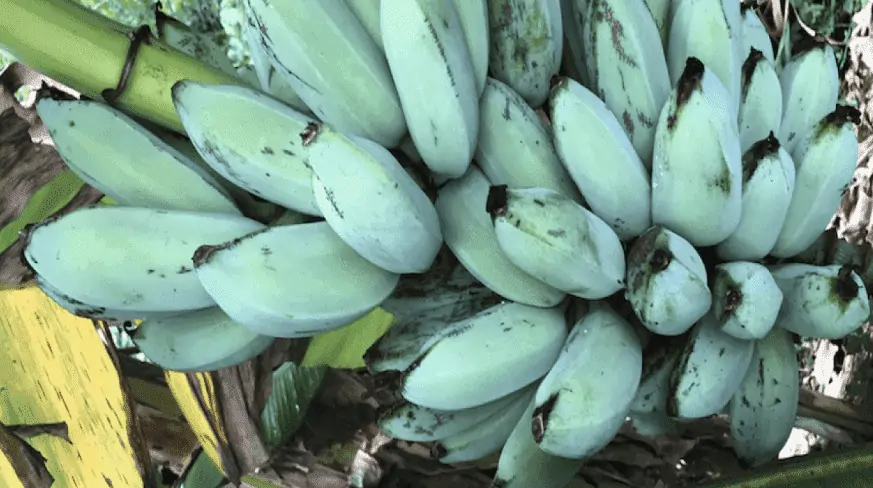
Image Source: Bright Spot
This plant is a hybrid between Musa balbisiana and Musa acuminate. It is mostly a cold and wind-resistant plant that can tolerate temperatures close to the freezing point. However, the plant has its optimum growth at 40 degrees Fahrenheit. Due to the fruit’s taste resembling vanilla ice cream, the fruit is often called the Ice Cream banana.
Musa velutina trees
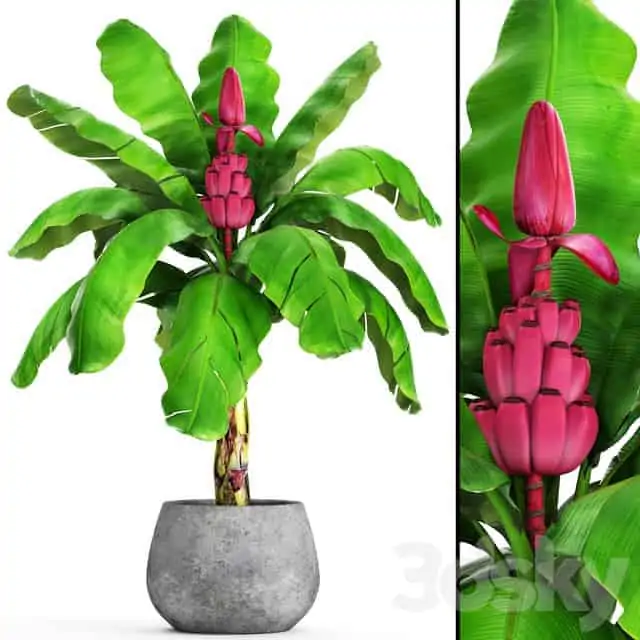
Image Source: 3ddd
This plant variety is also referred to as the Pink Banana. This relatively short, 5 to 7 feet tall banana tree is native to India. The plant enhances the look of the garden with its attractive and showy appearance. So, one of the main uses of this banana tree is for decor purposes due to its image-perfect look.
Goldfinger banana trees
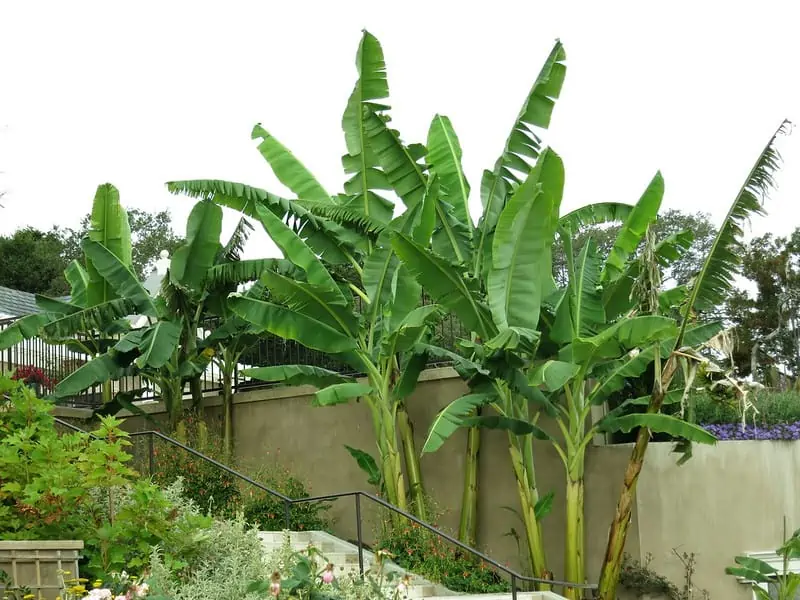
Image Source: Farm5
The Goldfinger banana plant is an easy-to-maintain plant that has rapid growth. It can grow up to 14 feet tall and produces the tastiest fruit. The plant is genetically modified and can withstand many pests, extreme weather conditions, etc.
Propagation of banana trees
Propagating banana trees at home might be a lot easier than you imagine. You can grow it indoors, in the backyard, in the garden, as well as on your terrace. Typically, the size of your home or garden does not play a huge role in propagation. However, you may not be able to grow fruits if you plant indoors. If planted in the spring season, the banana tree will grow at a faster rate and will have a longer lifespan.
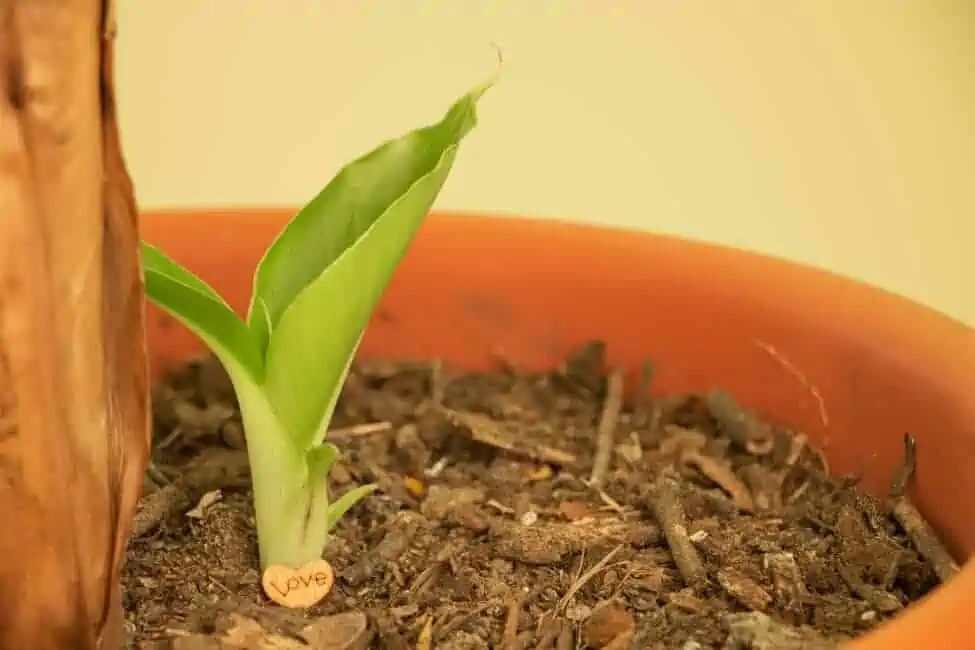
Image Source: Petal Republic
Pruning
Before the tree produces the fruits, pruning it is necessary. Pruning it will ensure that there is only one stem. Then, one sucker or banana ‘pup’ is to be left at the base of the stem. This pup will grow into the main stem in the next growing season.
Division
This is the best method of propagation of banana plants. For division, the suckers are to be separated from the rhizome. When the suckers are 3 feet tall, these will have their own roots. At this time, you can separate these from the parent plant.
Potting of the banana trees
For optimal growth, a banana tree needs a 15-gallon pot. The soil should be organically rich, and the pot should have drainage holes. Potted banana plants need higher feeding and watering habits. However, it is safe to bring these plants indoors after potting is done.
Common pests of banana trees
While bringing home the banana tree as a houseplant, getting information about the common pests is necessary, along with knowing the uses of the plant. The common pests that attack banana plants are as follows:
- Aphids – These pests cause shriveled and curled foliage. These can also affect the fruits.
- Black weevils – Black weevils cause the plant to secrete jelly-like sap. These pests can be eradicated with the proper use of pesticides.
- Scarring beetles – These pests affect the fruits.
- Nematodes – The nematode is the most common pest that affects the banana plant. These pests cause the rotting of plants and fruits.
- Sap-sucking insects – The common pests of banana plants also include the sap-sucking insects like mealybugs and red spider mites.
- Thrips – Thrips split the peels of the fruits and stain them.
FAQs
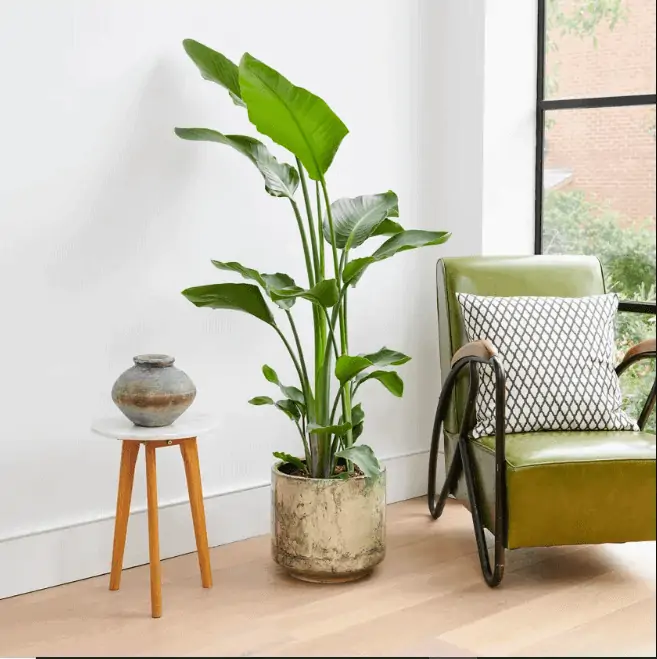
Image Source: Patch Plant
Is the banana tree lucky for home?
In India, many people believe that banana trees bring money, peace, and health to your home while creating an image of positivity. A healthy banana plant brings positive energy to your home. However, as per Vastu Shastra, if your banana plant is unhealthy, it may bring negative energy to your home.
Can banana trees grow in pots?
You can grow banana plants in pots. However, these pots or containers should be deep enough. With proper care and favorable weather conditions, the tree will also bear fruits even when it is grown in pots.
Do bananas like the full sun?
Since these are tropical plants, full sun to a partial shade create the optimum growing conditions. The most preferable condition for a banana plant is about 6 hours of daily sunlight. However, scorching sunlight can harm the plant.
How many times do banana trees give fruit?
The banana plant first bears fruit after 2 to 3 years. Once it has produced fruits, the stalks need to be cut, as they fruit only once. Then, from the underground stem, new plants grows, which will again bear new fruits.
Can you grow a banana plant indoors?
Many banana tree varieties can grow equally well indoors. However, they still require proper care, watering, and plenty of natural light. If there is no such option as natural light at your home, a good supplement can be artificial glow lights. You may also keep your potted banana plant outdoors from time to time.
Planting banana trees as per Vastu Shastra
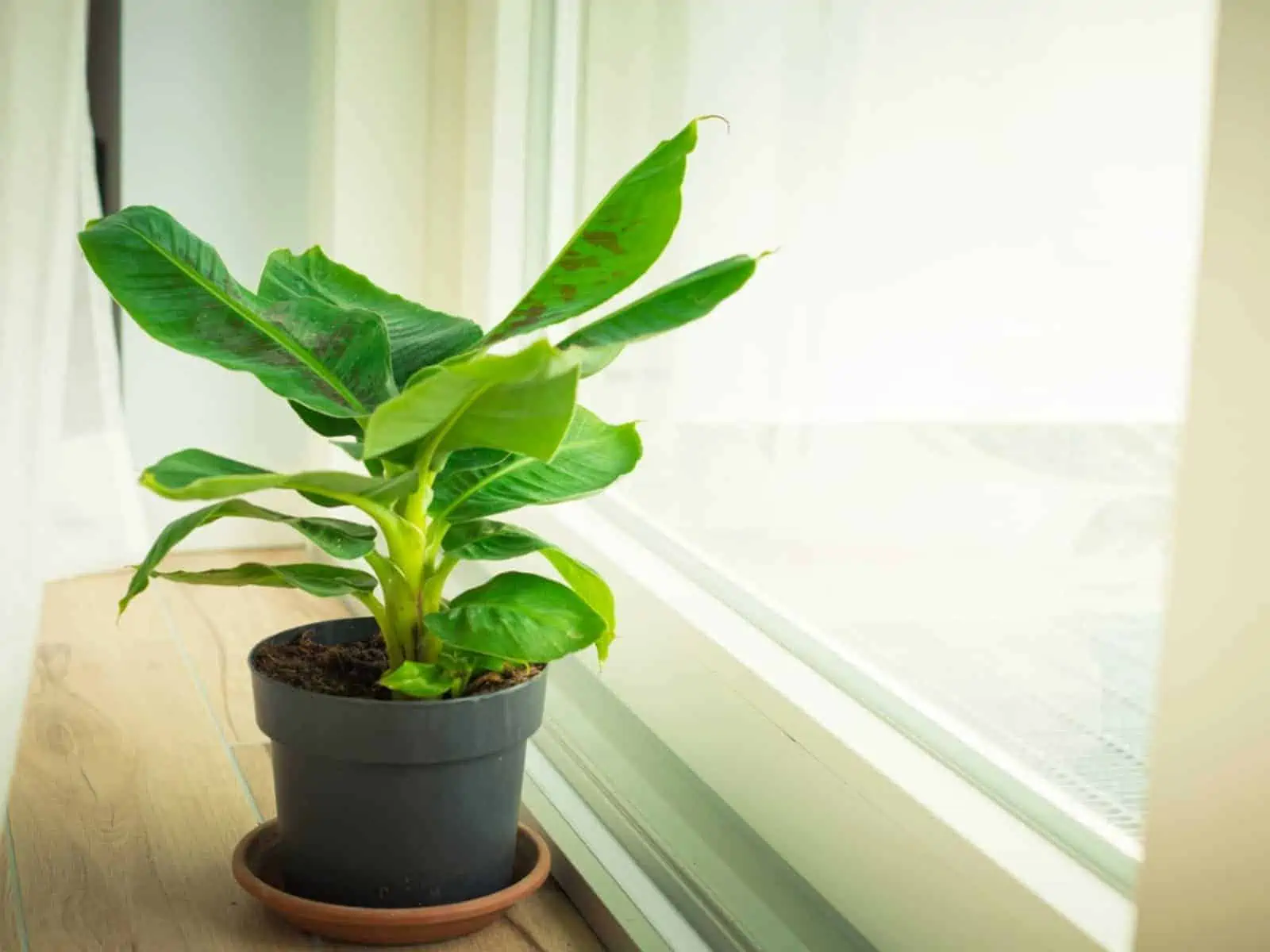
Image Source: Gardening Know How
According to the Indian traditions and Vastu Shastra, banana trees are auspicious and are associated with Lord Vishnu in Hindu mythology. This plant is also worshiped as it is believed to bring a prosperous and peaceful life. The leaves of this plant are used in holy ceremonies.
Vastu Shastra says that if you have problems related to the Jupiter planet in your Kundli, having a banana plant at your home will help you. It also works to keep the kids healthy and focused. A healthy banana plant improves your health and wealth.
According to the Vastu Shastra, the banana tree should be planted in the Northeast or Eastern part of your home. It should never be kept near the bedroom, as its big leaves can cause an excess of carbon dioxide after sunset.
A banana plant, when planted with a Tulsi plant, brings positive energy to your home. The Tulsi plant should be on the left side of the banana plant. The area around the banana plant should always be kept neat and clean.
Buy banana trees here!
Rookhraj Paudhshala banana live plant
| B U Y H E R E |
Puspita nursery banana rare plant
| B U Y H E R E |
Bonsai plants nursery banana live plant
| B U Y H E R E |
Buds n Blush hybrid G-9 banana tree
| B U Y H E R E |
Pot a Plant banana palm
| B U Y H E R E |
Blooming’s Garden banana plant
| B U Y H E R E |
Nursery Nisarga banana plant – dwarf
| B U Y H E R E |
Apka Interior banana plant
| B U Y H E R E |
Check out these wonderful images of banana trees!
Conclusion
The banana plant prefers a warm and humid climate to grow optimally. However, you can also grow it indoors with proper exposure to sunlight and adequate watering. The graceful plant, when planted in your backyard, or even inside your home, expresses your good taste. The plant does not only enhance the look of your house but also has plenty of benefits and is a symbol of good luck.
With the optimum light, soil, water, temperature, humidity, and fertilizers, the banana tree is the perfect image of an excellent houseplant. Each variety of banana trees has its own uses, lifespan, and needs. As per your taste, you can choose from the different varieties of the plant such as Cavendish banana trees, Ladyfinger trees, Banana dwarf red Dacca trees, Blue Java trees, Musa velutina trees, or Goldfinger trees. However, you need to keep in mind that various pests can affect these plants, so the use of pesticides and fungicides is a must.
Planting banana trees has many uses more than just making your home and garden look beautiful in images. As per the traditional Vastu Shastra, these plants bring in health and wealth to the family when planted in the right way and direction. A healthy tree brings joy, peace, health, and positive energy to the household.
The above-mentioned uses and images of banana trees will help you to make the decision of buying one. Knowing about the uses, growth, care, and propagation techniques, along with placement techniques as per Vastu Shastra is also important when you bring the banana tree as a houseplant. So, make yourself ready to bring the exclusive banana plant to your home!
*The featured image used in this article is from The Fragrant Garden.









